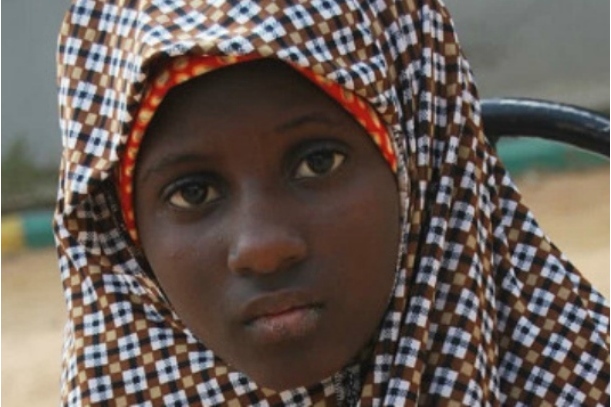An unprecedented use of female suicide bombers

Summary
Female bombers in particular have the advantage of bucking stereotypes about what a militant looks like, so they can slip past security professionals without receiving the same level of scrutiny.
Forecast
- Wilayat al Sudan al Gharbi, formerly Boko Haram, has used more female suicide bombers than any militant group in history, but most jihadist groups have used and will continue to use female operatives sparingly in suicide bombings, despite their tactical advantages.
- Now that Wilayat al Sudan al Gharbi has been forced from much of its territorial gains in Nigeria, it will likely continue using women as suicide bombers, if only to reduce its hostage population.
Analysis
On the morning of Oct. 16, three women joined the crowd of worshipers entering a mosque in the Umarari Molai suburb of Maiduguri, Nigeria, for morning prayer. Beneath their clothing, each had an explosive device strapped to their chests, and within minutes of their entry three bombs ripped through the mosque, leaving 26 dead.
The attack was the second of three suicide bombings that wracked Nigerian cities within three days. All were the work of Wilayat al Sudan al Gharbi, the group formerly known as Boko Haram before it pledged fealty to the Islamic State in March 2015.
By our count, Wilayat al Sudan al Gharbi has mounted more suicide bombings this year than any other jihadist group except the Islamic State core in Iraq and Syria. But whereas the Islamic State core group overwhelmingly uses male bombers, nearly half of Wilayat al Sudan al Gharbi's bombers have been women. No terrorist group in history has used as many female suicide bombers as Wilayat al Sudan al Gharbi has used this year.
A Short History of Female Suicide Bombers
Of course, militant groups have sent women on suicide operations before, particularly during the second half of the 20th century. Starting in Lebanon in the mid-1980s, members of the communist Syrian Social Nationalist Party in Lebanon used car bombs to strike the Israeli military and the Israeli-supported South Lebanon Army. Unlike Hezbollah, the Islamist group that had already pioneered the use of suicide bombing in Lebanon, the Syrian Social Nationalist Party used it as a weapon to promote a secular, rather than a religious, political agenda. It also used female bombers.
Far from Syria, the Liberation Tigers of Tamil Eelam, a revolutionary organization committed to the overthrow of Sinhalese rule over the Tamil portions of Sri Lanka, also used female suicide missions. Throughout the 1990s until its dissolution in 2009, the Tigers used more female suicide bombers than any other militant group up to that time, reportedly deploying at least 46 women on suicide missions. One of their female members famously assassinated former Indian Prime Minister Rajiv Gandhi in 1991 after placing a garland around his neck at a political rally. In 2007, a Tiger female bomber famously hid explosives in her bra in a failed assassination attempt on a Sri Lankan government minister.
In the late 1990s, the Kurdistan Workers' Party (PKK) carried out several attacks against Turkish military and police targets using female suicide bombers. Several of the PKK operatives even strapped their explosive devices around their midsections to give the appearance that they were pregnant.
All of these early adopters of female suicide bombers were Marxist groups, rather than the jihadists who conduct the bulk of suicide attacks today. About a decade ago, the Chechens became the first radical Islamist or jihadist organization to employ women as suicide bombers. Between 2000 and 2004, female Chechen suicide bombers, often referred to as "Black Widows," attacked Russian military targets in Chechnya and civilians in Russia and even tried to assassinate the Chechen president.
Jihadists Embrace a New Method
Though men are more often called to sacrifice their lives for their faith in the jihadist ideology, the Koran can be read to support women's martyrdom as well. Islam's first martyr was a woman named Somaiya. In addition to motives such as anger and revenge, which they share with their secular counterparts, jihadist women who conduct suicide missions can also draw upon various Muslim concepts of martyrdom, including the forgiveness of all sins and immediate entrance into paradise. Thus suicide bombers often view their actions as a way to atone for what they view as past sins or shame, whether related to a rape, an extramarital affair or an out-of-wedlock pregnancy.
With the beginning of the second or "Al-Aqsa" Intifada in September 2000, Palestinian militant groups overwhelmingly adopted suicide bombing as a weapon. The method is incredibly effective for guerrilla and insurgent warfare. Because they can carry small, cheaply made explosives straight to the target, suicide bombers of any gender can cause more damage than a larger device detonated farther away. With the same quantity of explosives required for one truck bomb, militants can make dozens of 4.5- to 9-kilogram (10- to 20-pound) suicide devices, then use them all simultaneously to disorient their enemy or conduct a long, drawn-out series of attacks to wear the enemy down.
Female bombers in particular have the advantage of bucking stereotypes about what a militant looks like, so they can slip past security professionals without receiving the same level of scrutiny. There are also substantial cultural barriers to physically searching or, in some cases, even looking at women. Especially in the Middle East, female operatives may be allowed to pass through security checkpoints unsearched, often with their faces covered and draped in the traditional "burqa" or "niqab," beneath which they can easily conceal explosives.
During the intifada in 2000, when Israel countered the rush of suicide bombings with new security measures, the Palestinians started employing female bombers to circumvent them. The new trend began in 2002, when a 28-year-old woman affiliated with the militant al-Aqsa Martyrs Brigade detonated an explosive vest in Jerusalem, killing one other person and wounding 81. Following the brigade's lead, Palestinian Islamic Jihad and Hamas also have deployed female suicide bombers in attacks against Israel.
The wave of Palestinian suicide bombers – and particularly female Palestinian suicide bombers – has waned dramatically since its peak in 2002-2003. In November 2006 there were two female suicide bomb attacks against Israeli forces in Gaza. But in Israel itself there have been no reports of female Palestinian suicide bombers since 2005, aside from an amateurish attempt on Oct. 11, 2015.
Still, other Islamist organizations soon recognized an effective tactic. Abu Musab al-Zarqawi's al Qaeda in Iraq, now known as the Islamic State, began using female suicide bombers in late 2005, such as in the November 2005 attack against three Western hotels in Amman, Jordan. However, the move drew heavy criticism in the Muslim community, and after the attack in Amman, in which an explosive device carried by a woman failed to detonate and she was captured, al Qaeda used female bombers sparingly.

A Multipurpose Strategy
In fact, now most jihadist groups that use suicide bombings have tempered their use of women in those operations. Since late 2005, outside of Nigeria we have seen jihadist organizations use female suicide bombers on only a few occasions. Most groups are more likely to dress male suicide bombers in women's clothing than to send in female operatives. This is what makes Wilayat al Sudan al Gharbi's heavy use of female suicide bombers all the more unique. The sheer volume is simply unprecedented. Only 10 years ago, the Tigers were considered exceptional for sending 46 women to their deaths for political purposes, and that was over the course of 18 years. Wilayat al Sudan al Gharbi has already used over 50 female suicide bombers this year alone.
Guerrilla and terrorist tactics have become especially important for Wilayat al Sudan al Gharbi now that it has lost most of the cities and towns it controlled as part of its self-proclaimed Islamic polity. The group has reverted to guerrilla warfare and terrorism, operating from mobile bases in rural areas. But providing shelter for a large army is costly, and Wilayat al Sudan al Gharbi must also control and sustain a large number of women and children it has captured. The highly publicized case of the 276 schoolgirls kidnapped from Chibok in April 2014 was only one such abduction.
Under such circumstances, using women as suicide bombers may have a sinister dual purpose. Not only does it help the Islamic State in Nigeria continue its war, but it also reduces the number of mouths to feed and allows the group to make its camps smaller and more difficult to find. The United States recently sent additional intelligence, surveillance and reconnaissance forces to northern Cameroon to help the forces hunting Wilayat al Sudan al Gharbi because the group is managing to successfully evade government forces.
But however jihadists may benefit from using captive women and girls for suicide missions, why would the hostages agree to commit such atrocities? Those selected as bombers may well be traumatized to the point of blind obedience to their jihadist captors, common among child soldiers elsewhere in Africa. They may even welcome the suicide mission as a way to escape their experience as captives, one that has probably become even more taxing now that the group is constantly moving.
For now, abductions of women and children across the region will likely continue unabated. Wilayat al Sudan al Gharbi shows no sign of stopping its raids on villages, and the kidnappings will only feed the ranks of hostages available for suicide missions. Whatever other jihadists' objections to putting women in the role of martyr and soldier, Wilayat al Sudan al Gharbi has no such qualms.
Scott Stewart is Lead Analyst and Margaret Fox is Production Editor, both of Stratfor. “An Unprecedented Use of Female Suicide Bombers ” is republished with the permission of Stratfor, and under content confederation between Financial Nigeria and Stratfor.
Related
-
Experts say gender diversity growing at a slow pace in Africa
The panelists said women have had little, albeit increasing, access to power and strategic decision-making.
-
AWIEF 2025 mobilising stakeholders to recommit to gender equity
AWIEF2025 will convene a vibrant community of entrepreneurs, corporate executives, investors, policymakers, development ...
-
Access Bank commemorates 50th anniversary of UNPFA ahead of Nairobi summit
The event was themed “Sustainable Population Growth, Demographic Dividend and the Future of Nigeria: The Role of the ...










